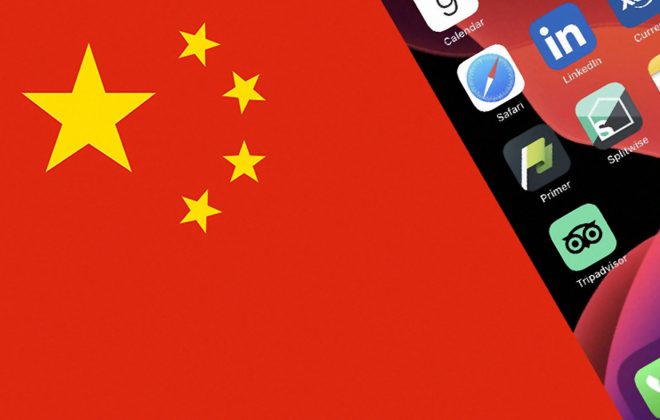What to look out for when targeting the Chinese market
With the kick-off of the 2022 Beijing Winter Olympics, experts from all over the world are keeping their eyes pointed towards the Chinese market. Hopeful news of a potential end to the 2-year long pandemic has motivated brands and destinations to resume marketing activities towards the China market. While it remains unclear when Chinese travelers will begin embarking on their journey, many countries are rolling out marketing campaigns to capture their interest. Furthermore, brands have also been looking inward, expanding their business activities by connecting directly to the mainland.
Destinations investing in the future Chinese traveler

Over the past few weeks, many countries around the world have shifted their view on the pandemic. Countries are relaxing border restrictions and opening up to vaccinated travelers. This shift came as some nations felt that living with covid may be unavoidable due to its persistent nature. At the same time, they are wary that while infection numbers may be higher than other variants, it is relatively weaker and that travelers will still need to be aware of their condition. Countries such as Australia, New Zealand, the Philippines, Malaysia, and more are joining this trend.
Meanwhile, tourism boards and the hospitality industry have been working towards grabbing the attention of potential visitors with new marketing campaigns and travel information. One example is Switzerland which is preparing to receive Chinese tourists to their destinations. This is because Chinese tourists accounted for over 100,000 overnight stays in 2019. The potential benefits are much greater for them should the Chinese choose to travel to the Alpine country with the new and eager interest in winter sports thanks to the 2022 Beijing Olympics. They have developed a multitude of applications to help Chinese travelers to roam their streets and have also launched Chinese social media accounts to promote directly to the Chinese audience. Furthermore, Geneva’s tourism office reported that they were able to generate over 10 million views on China’s version of Tik Tik, Douyin for promotional purposes.
Other countries such as Sweden, Norway, Finland, and Denmark are working with Chinese companies to create travel content in China with a focus on targeting young independent travelers. Tapping into tech giants or Chinese agencies to present their tourism offerings in a way that Chinese consumers understand best. The key goal is to provide genuine experiences and share the lifestyle of local Europeans in China. Other countries such as Italy are catering to the curious tastebuds of the Chinese to provide Mediterranean foods from China to capture their interest and build a connection between two nations from two vastly different cultures.
E-commerce and luxury brands wary of the growing power of Chinese consumption

While people associate China with middle-income, The Economist recently reported that China may breakthrough to become a high-income country in 2023. Having invested 43% of its GDP 5 years before the pandemic and maintained a high level of GDP growth, China’s potential is evident when compared to high-income nations. The supporting factor for this argument, according to The Economist, is in the fact that a quarter of its workforce is in agriculture, 19% in manufacturing, and high-income only making up about 3%. The idea is that if China becomes a high-income nation with 25% of workers in agriculture, the potential for those workers in more developed forms of employment may result in much higher spending. China’s consumption potential is widely known and a powerful factor for companies to consider with the hope for bigger gains in this rapidly growing market.
Some of the major winners of market expansion into China have been luxury brands and global sellers on e-commerce platforms. The changing lifestyle trends and a society that is further developing a taste for unique experiences from all over the world has opened the gateway for companies to build a presence not only targeted at China but also operational from within. According to Bain & Company, in 2021 alone, one-fifth of all global spending on luxury goods originated from China. Brands such as Gucci, Dior, Louis Vuitton, Burberry, and more have capitalized on special Chinese celebrations such as the Chinese New Year, creating custom limited-edition collections.
Cross-border e-commerce has seen rapid growth as well providing companies abroad a new playground to provide their goods and expand their revenues during the pandemic’s slow market. In fact, the e-commerce sector is booming in China and is changing the way brands are selling their products. Even luxury brands, who have traditionally focused mostly on in-store experiences have expanded into digital experiences and e-commerce due to the local trends in China. Total e-commerce sales in China in 2020 made up $2.3 trillion, which is about half of the world’s total which stood at $4.3 trillion, and it is still growing. In 2021, China surpassed this number surpassing the combined total of Europe and the United States. With such data in mind, it will be important for companies around the world to be prepared for the future by taking action now. However, at the same time, companies will need to balance what kind of messages they aim to create with consideration for Chinese culture and local trends.
Unlock New China during the COVID era

Entering the Chinese market takes time and extensive research as well as a deep understanding of consumer insights, trends, and local behaviors. Engaging in all these activities may be expensive and impossible for small to medium-sized businesses around the world. With the added constraints of COVID-19, finding an efficient and cost-effective solution is vital to unlocking the potential of the Chinese market. However, finding partners that can digest both the international and local Chinese perspectives can be hard and risky.
Under the goal of connecting global cultures to the Chinese youth, Shake to Win has been facilitating China market access for SMEs, cultural organizations, as well as public institutions from all over the world, building commercial and emotional bridges between distinct nations and helping Chinese consumers to reach the most unique places, products, and people. We offer an extensive range of services including localization, social media, online marketing, offline campaigns, e-commerce, and more, leaving you to focus on your business without the need to learn Chinese from your local destination. For more information or business collaboration please contact, partnership@shaketowin.net or try out Shake to Win by clicking the button below.




